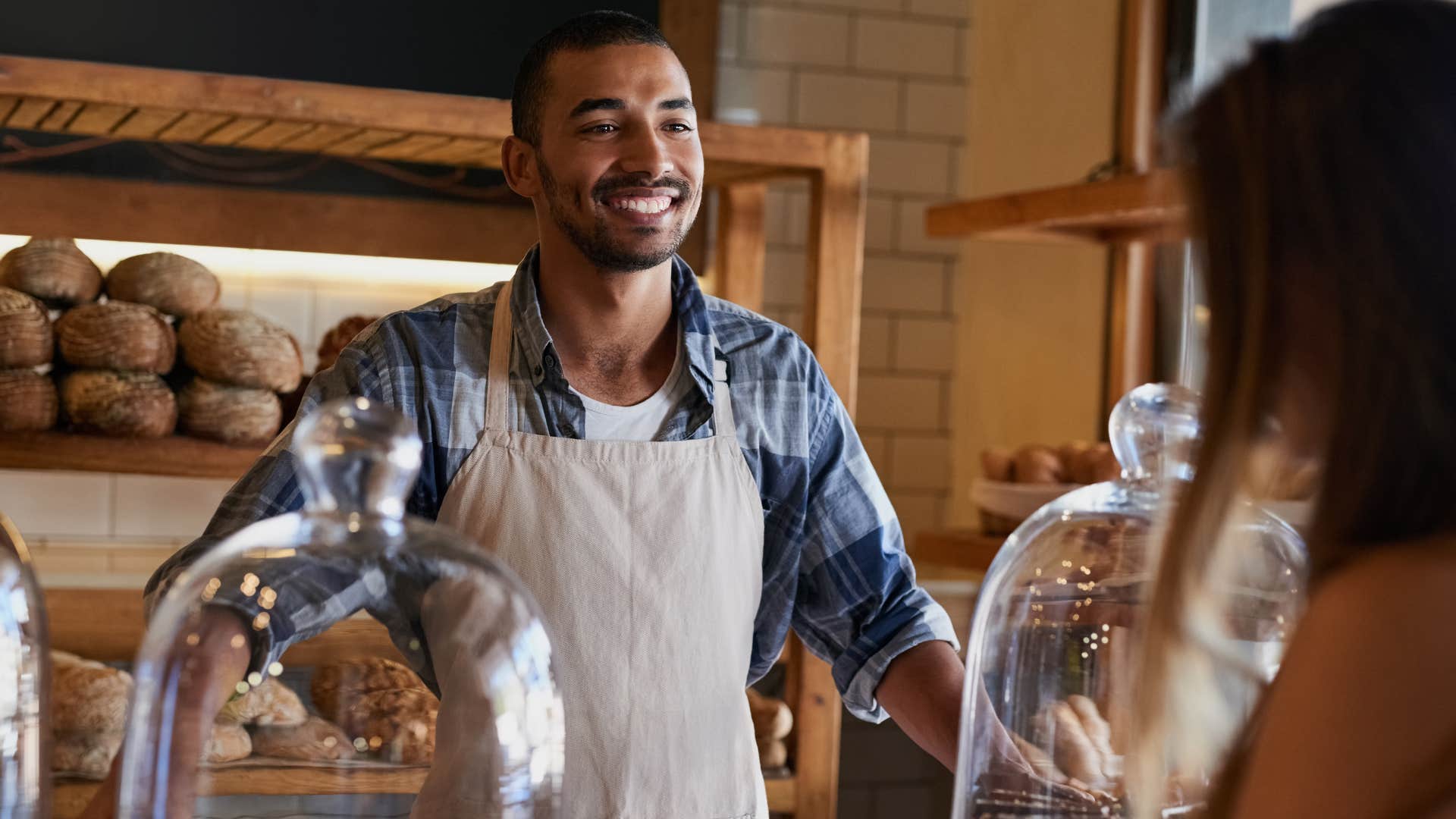Ever notice how stepping into a restaurant these days feels kinda like checking a financial vibe-o-meter? With studies showing more people shying away from dining out—thanks to the hefty bill of living—grabbing a table isn’t just about the food anymore. It’s like a surprise litmus test of someone’s wallet, or better yet, their financial swagger. Now, anyone can slap their dinner tab on a credit card and call it a night, but only a lucky few pull off certain restaurant moves that scream real disposable cash. Some of these little signals are as much about deep-seated social standing and life experience as they are about cold, hard bucks. Could Mercury’s mischievous sway today be nudging some folks into splurging or others into pinching pennies? Either way, these 11 telling behaviors at eateries might just unmask who’s genuinely rolling in it—and who’s faking the finesse. LEARN MORE.
Considering recent studies reveal that more people than ever are turning away from restaurants and eating at home more to cope with financial difficulties, the simple act of eating out is a signal in itself of a person’s financial security. However, there are also several things people do at restaurants that reveal how much money they really have.
Anyone can put dining expenses on a credit card and spend money they don’t have, but when you’re people who do these things consistently, that’s a sign of true wealth and disposable income. While some of them are rooted in having the money and not being afraid to spend it, others are the result of socioeconomic status, personality, and education.
 Dragana Gordic | Shutterstock.com
Dragana Gordic | Shutterstock.com
Only one-in-five people argue that they buy things without checking the prices, according to a study from the Pew Research Center. Many people are simply struggling to afford their basic necessities, so checking their bank account and being intentional about choosing cost-effective things isn’t just a common frugal practice. It’s a survival mechanism.
Many of the things people do at restaurants that reveal how much money they really have can feel performative, but being able to order things, even the most expensive thing on the menu, without asking about or considering the price, is not only a luxury, it’s a privilege that filters into every aspect of their financial lives.
Advertisement
 Ekateryna Zubal | Shutterstock.com
Ekateryna Zubal | Shutterstock.com
Rather than immediately opting for tap water to save a few dollars at a restaurant, people with wealth go out of their way to order bottled sparkling or still water. For some, it’s simply a nutritional choice, not a financial one. They have the money and privilege to consider their personal health above their financial security.
That’s part of the reason why health, life expectancy, and general quality of life are intrinsically tied to financial well-being, as a study published in the Health Psychology journal explains, because wealthy people aren’t forced into making decisions to protect their financial survival at the expense of their mental or physical health.
Advertisement
 Jose Calsina | Shutterstock.com
Jose Calsina | Shutterstock.com
Being willing to buy for an entire group at a restaurant is a clear privilege in itself, considering most people can no longer afford to go through a drive-thru or treat themselves to a single meal outside the house.
Especially if they’re not checking their bank account or trying to split up charges afterward, this is one of the things people do at restaurants that reveal how much money they actually have.
Advertisement
 SeventyFour | Shutterstock.com
SeventyFour | Shutterstock.com
For many people who have the disposable income to go out to eat and spend at restaurants without a second thought, tipping isn’t just a foundational principle, but also an exciting, yet casual treat. When they get a great server or connect with a service worker, they don’t mind dropping a hundred-dollar bill on the table or tipping 30%, 40%, or 50% more than they typically would.
While some upper-income people may occasionally view tipping as an obligation when their service is poor or they had a bad meal, others consider it a freedom and a choice, which is why their tipping habits are generally revealing of how much money they really are able to spend.
Advertisement
 Dean Drobot | Shutterstock.com
Dean Drobot | Shutterstock.com
Many people living in financially precarious situations check their bank accounts multiple times a day. Whether they’re getting gas, paying a bill, or just paying a parking meter, they’re always doing a number of things in their head: figuring out if they have enough money, if they have enough to spare, and doing the math on what they can afford in the context of their larger financial needs.
Paying without checking their bank account is often one of the things people do at restaurants that reveals how much money they really have. Whether they splurged on the most expensive meal or picked up the tab for the whole group, they’re not worried about affording the check, no matter what.
Advertisement
 guys_who_shoot | Shutterstock.com
guys_who_shoot | Shutterstock.com
While being well-traveled and having a certain level of educational attainment may be more linked to generational or parental wealth than a person’s true disposable income, random things like being able to pronounce dishes correctly in restaurants can be one of the things that reveal how much money someone comes from.
Wealthy people have the privilege of traveling, becoming immersed in different cultures, and learning new languages, all of which are more accessible to them from a time and money perspective than to their low-income counterparts.
When it comes to actually eating those dishes, however, many people, regardless of their income or wealth, tend to believe that food tastes better based on its price tag. We perceive our meals and food at restaurants to be better when we’ve spent more on them, so regardless of their foreign roots or fancy names, the price still plays a role in our experience.
Advertisement
 ZoranOrcik | Shutterstock.com
ZoranOrcik | Shutterstock.com
While many people perceive the wealthy to always be flaunting their money to others through clothes, cars, and spending, that’s generally closely related to people aspiring to be perceived as rich, not their true financial status. Truly wealthy people are often subtle about their status symbols and wealth, wearing “quiet luxury” and simple designer clothes, even when they go out to a restaurant or event.
This is one of the things people do at restaurants that reveal how much money they really have. They’re not flashy about buying expensive things, asking for the most expensive wine, or even bringing their thousand-dollar purse to the table. Instead, they’re quiet about their wealth in an “if you know, you know” kind of way.
Advertisement
 PeopleImages.com – Yuri A | Shutterstock.com
PeopleImages.com – Yuri A | Shutterstock.com
While there are studies that suggest people are more likely to say yes to restaurant upcharges when they’re in support of environmental or sustainability causes, it’s also one of the things people do at restaurants that reveal how much money they really have.
Whether it’s unlimited refills, extra guacamole, or exclusive dining experiences, people with the money to spend on whatever they want, at any time, aren’t worried about the additional costs of convenience, preferences, and fun. They may even customize their dishes or ask for food that’s not on the menu, because they understand the simple privileges and luxuries people with the money to spend are often offered.
 Jose Calsina | Shutterstock.com
Jose Calsina | Shutterstock.com
Covering the meal, whether or not they’re going to be reimbursed for it by others, is often one of the things people do at restaurants that reveal how much money they really have. Not only do they clearly have the money to afford their own meal, but they also have the disposable income in their account to afford everyone’s without question.
Of course, this behavior isn’t always a kind-hearted endeavor, although paying for someone’s meal can be, but a convenient way to ensure they’re not being perceived as less secure and financially free. They have the money, so they’re not going to battle over splitting up a bill or going back and forth with people to cut costs.
 ViDI Studio | Shutterstock.com
ViDI Studio | Shutterstock.com
What studies call the “plunk factor,” otherwise known as the sound of a metal or durable credit card hitting a table or surface, is one of the newest status symbols for younger generations. With high monthly and annual payments, but a number of exclusive perks, these credit cards are the kind of things you realistically only spend money on when you have a certain level of financial freedom or disposable income.
Using these flashy credit cards is one of the things people do at restaurants that reveals how much money they really have. They’re a status symbol in themselves, riddled with prestige, visual appeal, and hidden perks that are exclusive to the people who own them.
 Drazen Zigic | Shutterstock.com
Drazen Zigic | Shutterstock.com
According to a Morning Consult study, around 41% of high-income earners go to a restaurant at least twice a week, so it’s no surprise that they cultivate relationships with the wait staff and generally refer to them by name.
Whether it’s a hostess they have on speed dial to get a table last-minute or the restaurant’s sommelier, they’re “in the know” with everyone, simply because they go often and clearly spend a lot. Even if they’re simply building strong relationships with the staff based on their tipping tendencies and the money they spend regularly at the restaurant, it’s one of the things people do that clearly reveals how much money they really have to spend.
Zayda Slabbekoorn is a staff writer with a bachelor’s degree in social relations & policy and gender studies who focuses on psychology, relationships, self-help, and human interest stories.
Advertisement
Auto Amazon Links: No products found.

This will close in 0 seconds
This will close in 0 seconds